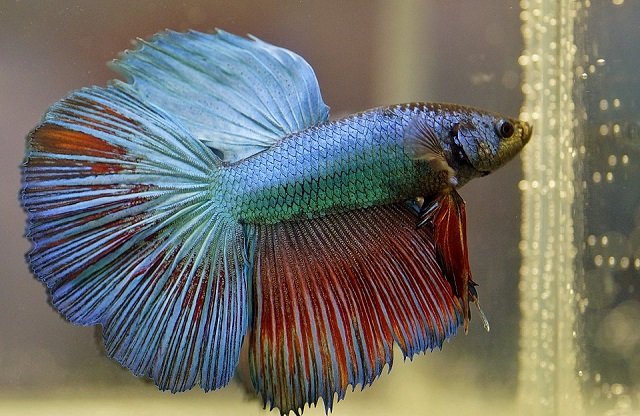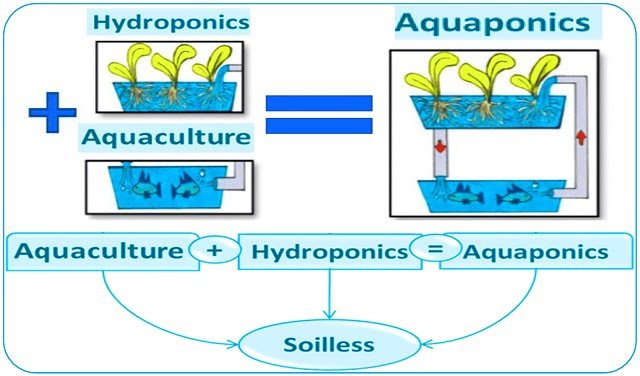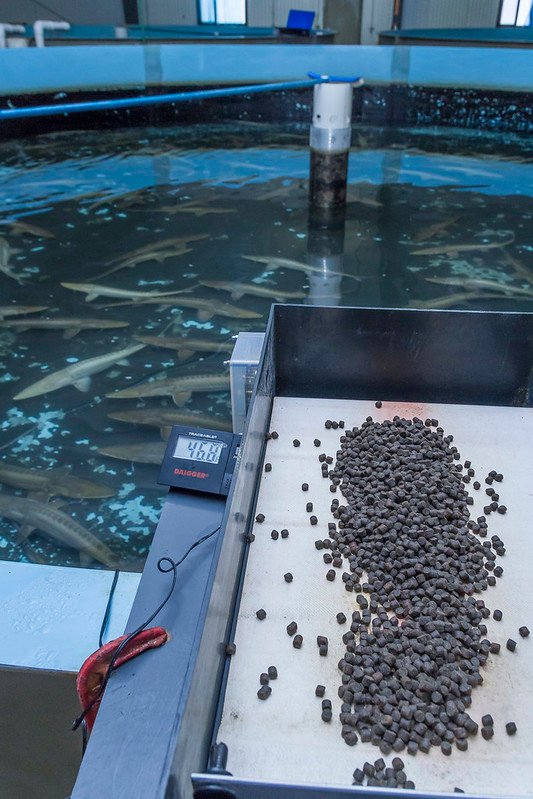
Modern aquaculture is advancing by leaps and bounds, integrating robotics, sensors, and autonomous systems to optimize production. However, this technological integration introduces new factors into the fish’s environment: the noise from motors and the light from submersible equipment. A recent Norwegian study by scientists from the Norwegian University of Science and Technology and SINTEF Ocean AS has focused on understanding how these artificial stimuli affect Atlantic salmon (Salmo salar) in commercial net-pens, offering crucial insights to ensure animal welfare and operational sustainability.
The research aimed to decipher whether the sounds and lights generated by aquaculture machinery could be a source of stress that alters the natural behavior of the fish. The findings not only confirm that salmon are sensitive to these stimuli but also that their reaction is surprisingly specific, opening the door to the design of “fish-friendly” technologies.
Key findings
- Avoidance of 400 Hz: Atlantic salmon exhibit a clear escape response when exposed to sounds at 400 Hz, a frequency that can be emitted by equipment such as ROVs.
- No Reaction to Other Frequencies: The fish showed no significant behavioral changes when exposed to sounds at 100, 200, 600, and 1000 Hz.
- Attraction to Light at the Surface: At a depth of 8 meters, salmon were attracted to the artificial light source, moving closer as the intensity increased.
- Aversion to Light at Depth: At 12 meters, the behavior reversed, and the fish moved away from the light source, demonstrating that the response is not linear and depends on the environmental context.
How was the fish’s reaction measured?
To conduct the study, researchers designed a device equipped with 360° sonars, an underwater loudspeaker, and powerful LED lights. This equipment was submerged at different depths (8 and 12 meters) in industrial-scale salmon pens.
The methodology was systematic:
- Sound tests: Sounds at specific frequencies (between 100 and 1000 Hz), common in farm equipment, were emitted for 60 seconds.
- Light tests: Underwater lights were turned on at four different intensity levels, ranging from 600 lx to 14,500 lx.
- Constant monitoring: Using sonar technology, the distribution and average distance of the fish from the device were recorded before, during, and after each stimulus.
To analyze the vast amount of sonar data, an advanced deep learning-based method was used, which automatically identified swimming patterns and precisely measured the fish’s avoidance distance.
The surprising response of salmon to artificial noise
The study’s results yielded a clear and specific conclusion about sound: frequency matters—a lot.
A clear evasion of 400 Hz
When the loudspeaker emitted a 400 Hz sound, the salmon reacted immediately and consistently: they fled from the noise source, increasing their average distance by up to 28%. This escape behavior suggests that this frequency is perceived as a threat or a significant disturbance. Once the sound ceased, the fish returned to their original distribution, indicating that the response was a direct and temporary reaction to the stimulus.
Indifference to other frequencies
Interestingly, sounds emitted at 100, 200, 600, and 1000 Hz did not elicit any observable reaction in the fish’s behavior. The salmon maintained their distance and swimming patterns without change. The authors suggest this could be because these frequencies are outside their most sensitive hearing range or that the hearing of farmed salmon may be affected by deformities in their otoliths, a phenomenon observed in other studies.
Stay Always Informed
Join our communities to instantly receive the most important news, reports, and analysis from the aquaculture industry.
The dual effect of light: Attraction and aversion based on depth
The salmon’s reaction to artificial light proved to be more complex and context-dependent, specifically related to depth.
Attraction in shallow waters (8 meters)
At a depth of 8 meters, the salmon showed a clear attraction to the light source. When the lights were turned on, the fish moved closer to the device, and this response intensified as the light intensity increased. This behavior suggests that in areas where natural light still penetrates, artificial light can act as a point of interest for the fish.
Avoidance in deep waters (12 meters)
However, when the experiment was repeated at 12 meters, the response was the opposite. The salmon moved away from the light source, regardless of its intensity, demonstrating avoidance behavior. Researchers explain that at greater depths, where natural light is scarce, a sudden and intense light source may be perceived as an anomalous disturbance.
Practical implications for more sustainable aquaculture
These findings have direct and valuable applications for the aquaculture industry. Far from being mere scientific data, this knowledge about salmon behavior can guide the development of better practices and technologies.
- Designing “Fish-Friendly” technology: Knowing that 400 Hz causes an escape response, manufacturers of underwater vehicles (ROVs) and other equipment can design motors that operate at different frequencies to minimize stress and disturbance to the fish.
- Sound as a management tool: Sensitivity to 400 Hz could be leveraged. Sound emitters could be used to guide fish, moving them away from risk areas or grouping them to facilitate handling, thereby reducing the need for stressful crowding nets.
- Intelligent use of lighting: Operators of ROVs and other submersible equipment can adjust light intensity based on the working depth. Using dimmer lights in deeper waters could reduce the impact on the fish’s natural behavior.
Ultimately, this study underscores that introducing technology into farm pens must be done with a deep understanding of its potential effects on the animals. Understanding how salmon perceive their acoustic and light environment is fundamental to developing precision aquaculture that is not only more efficient but also more respectful of fish welfare.
Reference (open access)
Zhang, Q., Bloecher, N., Evjemo, L. D., Føre, M., & Kelasidi, E. (2025). Avoidance behaviours of farmed Atlantic salmon (Salmo salar L.) to artificial sound and light: A case study of net-pen mariculture in Norway. Frontiers in Robotics and AI, 12, 1657567. https://doi.org/10.3389/frobt.2025.1657567
Editor at the digital magazine AquaHoy. He holds a degree in Aquaculture Biology from the National University of Santa (UNS) and a Master’s degree in Science and Innovation Management from the Polytechnic University of Valencia, with postgraduate diplomas in Business Innovation and Innovation Management. He possesses extensive experience in the aquaculture and fisheries sector, having led the Fisheries Innovation Unit of the National Program for Innovation in Fisheries and Aquaculture (PNIPA). He has served as a senior consultant in technology watch, an innovation project formulator and advisor, and a lecturer at UNS. He is a member of the Peruvian College of Biologists and was recognized by the World Aquaculture Society (WAS) in 2016 for his contribution to aquaculture.




